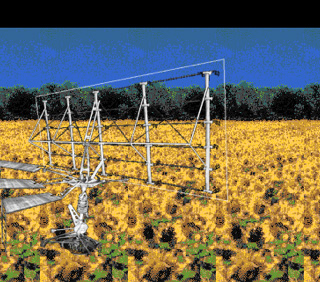Splash art originated in the 1940s in comics, where the term referred to a full page of visuals at the front of a book. Pages were designed to engage the reader's imagination along the lines of the comic's broader concept, while standing independent from the narrative. In the late 1990s, when the widespread use of the application Flash opened up new possibilities for animation and interactive media, the idea of the splash page migrated to web design. Online splash art brought visual excitement to a webpage when low modem speeds made it impractical to post large or moving images amid a site's textual content.
Rhizome introduced splash pages to its web site in 1998 in order to display artwork with greater immediacy....
Rhizome introduced splash pages to its web site in 1998 in order to display artwork with greater immediacy....
Launch Project 
 [combine], 1999
[combine], 1999
About
Scott Paterson's splash page confronts users with a cookie-collector that lets them select an identity ("who do you want to be?") before serving it back in a "stat.vhcl" that lists the time of visit, the visitor's name, the number of visits and the browser used. Like the stripes of black at the top and bottom of the page, the stat counter foregrounds the computer interface. Paterson provides an ironic counterpoint in the form of a bucolic field of sunflowers, but a close look shows that this image, too, highlights its own artifice: an abrupt, straight cut in each sunflower reveals that the same picture file has been pasted several times. Paterson is an artist, architect, and designer whose work explores the intersections of technology and physical space.
http://www.sgp-7.net
http://www.sgp-7.net